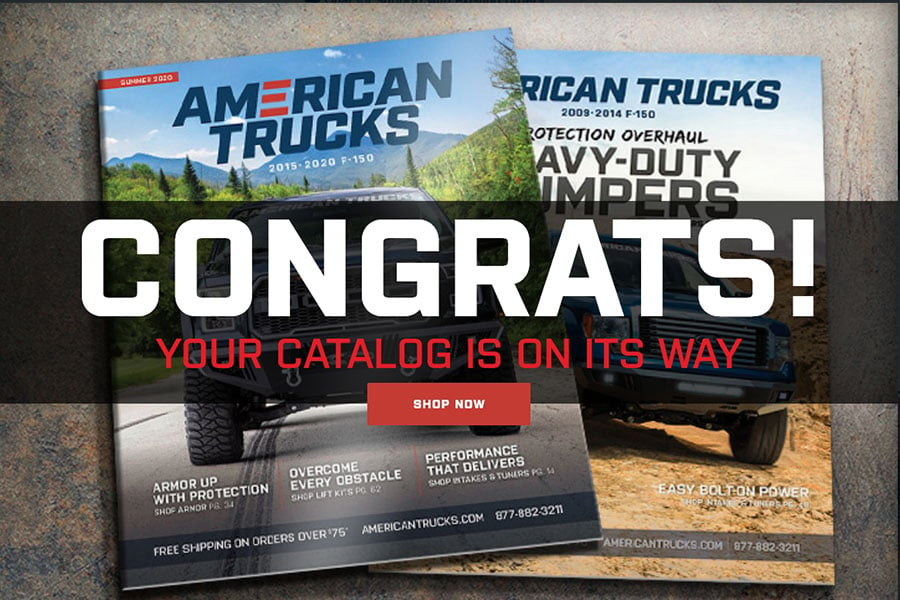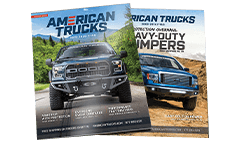
How to Install Daystar 1.5 in. Comfort Ride Front Leveling Kit (97-03 2WD) on your Ford F-150
Shop Parts in this Guide
1. Check to see that the spacer kit you purchased matches the year and model of your vehicle. Spacer kits two inches or taller may require a spring compressor to install. Ball joint and tie rod forks may also be useful.
2. A good portion of your front suspension will be disassembled so this would be a good time to replace any worn parts (i.e. tie rod ends, ball joints, idler arm and any bushings) Replace bushings with polyurethane replacement parts.
3. Jack up vehicle as high as possible using jack stands for support at all times.
4. With vehicle safely off the ground remove front tires. It is advisable to disassemble on side at a time so that you can use the other side as a reference for re-assembly in the event you get side tracked.
5. Remove the brake caliper from the rotor (attached with 2 bolts inside the caliper or with press-in clips depending on the vehicle). Do not remove the brake line from the caliper unless you intend to bleed the brakes at this time. Set the caliper aside or tie it up to the frame rail. Avoid pinching the brake line.
6. Remove the tie rod from the spindle using the proper tools. Do not hit the tie rod itself or the nut on the threaded portion of the tie rod or it may cause damaged and need replacing.
7. Remove the anti-sway bar from the lower control arm. This would be a good time to replace the end link bushings with polyurethane replacement bushings.
8. If your vehicle is equipped with anti-lock brakes you must now disconnect the front rotor sensor from the dust shield or spindle and set it aside.
9. Disconnect your shock absorber completely from the vehicle whether it is mounted inside the coil spring or not.
10. Support the lower control arm with jack just touching the arm. This will prevent it from dropping when the ball joint is disconnected.
11. The use of a coil spring compressor is recommended before the following steps are taken.
12. Disconnect the upper ball joint from the top of the spindle using the proper tools. Do not hit the ball joint or the threaded end of the ball joint. Once the ball joint is free the spindle should move easily.
13. Be careful when lowering the lower control arm. The coil spring is under high compression and may shoot out when released. Do not stand near the side of the truck during this step. Lower the jack so that the lower control arm swings down. If the coil spring has not fallen out on it’s own you may need to use a pry bar from the front of the vehicle to remove it.
14. Note which end of the coil spring is “bottom” for installation. Also note the depression in the lower control arm. It is important that the last winding of the coil spring fit into the indentation completely so that the vehicle will sit level. Do not switch coil springs from side to side as some vehicles have a specific “right” and “left” coil spring.
15. Check the coil spacer for proper fitment into the coil spring mount in the frame. The flat part of the spacer should face up and touch the top of the spring mount. Some vehicles have guiding tabs to center the coil spring in its top mount. These tabs may have become bent and need to be bent back to allow the spacer to properly fit in the mount.
16. Install the coil spring with the spacer on top of it. If used the coil spring compressor should still be on the spring in a compressed state. If it is not you may need to compress the spring before re-installing. Make sure the spacer is centered in the upper mount and the bottom of the spring is properly nested in the receptor groove on the lower control arm. If you are installing a two-inch or taller spacer you may need a spring compressor. Follow all safety rules when installing the coil spring as it will be under extreme compression.
17. Raise the lower control arm with a jack once the coil spring and spacer are properly lined up. Raise until the spindle is high enough to bolt on the upper ball joint. Before bolting on the upper ball joint make sure the brake caliper and brake line are where they need to be since some brake lines run inside the spindle and outside the coil spring.
18. With the upper ball joint tight and a cotter pin re-installed you may now remove the jack from under the lower control arm.
19. Assemble all of the components previously removed (sway bar with new polyurethane bushings, tie rod ends with polyurethane grease boot, brake caliper and anti-lock sensor). Don’t forget the shock with a new colored boot while it is off.
20. Repeat instructions for other side. 21. After properly installing both spacers you can install your front tires and lower vehicle back to the ground.
22. Your vehicle may sit too high at first because the suspension needs to settle. Carefully back the vehicle up and drive forward a few times using the brakes frequently. Park on level ground and check out your lift.
23. The vehicle will now require a front wheel alignment. Failure to do so may result in severe wear on your tires and may pull to one direction.


